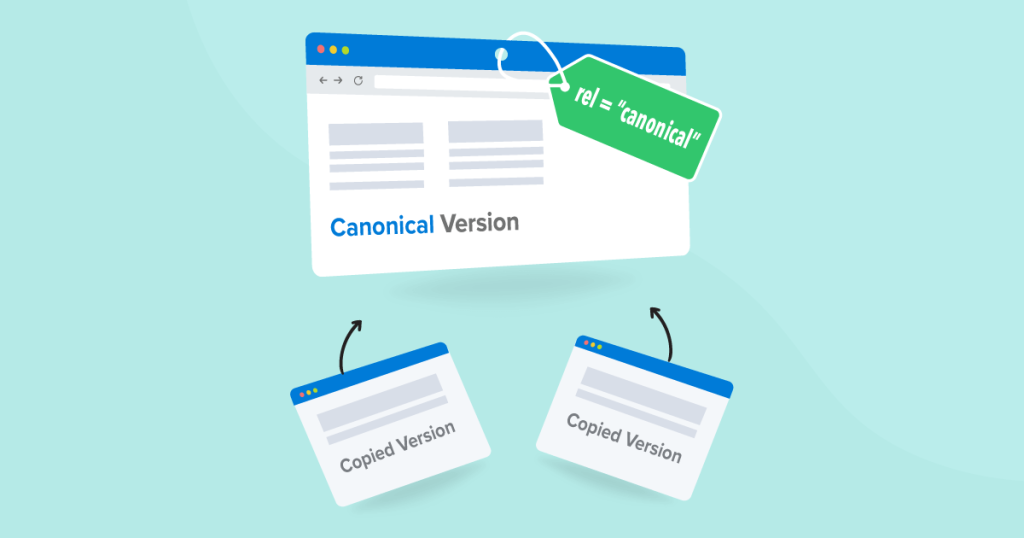Best Practices for Handling Duplicate Content in SEO Through Canonicalization
Best Practices for Handling Duplicate Content in SEO Through Canonicalization. Duplicate content is a common issue that many website owners and SEO professionals encounter. It occurs when similar or identical content appears on multiple pages within a website or across different websites. Duplicate content can have negative implications for search engine optimization (SEO), as it can confuse search engines and affect rankings. However, with the implementation of canonicalization, website owners can effectively handle duplicate content and improve their SEO efforts. In this article, we will explore the best practices for handling duplicate content through canonicalization.
Understanding Duplicate Content
Duplicate content refers to blocks of content that are identical or substantially similar across multiple pages. It can occur within a single website or across different websites. Duplicate content can be unintentional, such as when different URL variations of the same page exist, or intentional, like syndicating content on multiple platforms. Search engines strive to provide the best user experience by displaying diverse and relevant content in their search results, and duplicate content can hinder their ability to do so.
The Impact of Duplicate Content on SEO
Duplicate content can have several negative effects on SEO. Firstly, search engines may struggle to determine which version of the content is the most relevant and authoritative, resulting in diluted rankings for each page. Secondly, search engines might choose to exclude or penalize websites that exhibit a significant amount of duplicate content, leading to a decrease in organic traffic. Moreover, when multiple pages compete for the same keywords and rankings, it can create confusion and hinder the overall visibility of a website.
What is Canonicalization?
Canonicalization is a technique used in SEO to address the issue of duplicate content. It involves specifying the preferred version of a web page to search engines. By indicating the canonical (preferred) URL, website owners can consolidate the ranking signals and relevancy associated with similar pages, ensuring that search engines understand the intended primary content.
How Canonical Tags Work
Canonical tags, also known as rel=canonical tags, are HTML elements that inform search engines about the preferred version of a page. They are placed in the <head> section of the HTML code and point to the canonical URL. When search engines encounter canonical tags, they understand that the specified URL represents the primary version of the content. As a result, the link juice, authority, and relevancy signals are consolidated towards the canonical URL, improving SEO performance.
Best Practices for Implementing Canonicalization
Implementing canonicalization requires careful consideration and attention to detail. Here are some best practices to follow:
Conduct a Content Audit
Begin by conducting a comprehensive content audit of your website. Identify instances of duplicate content, including URL variations, similar product descriptions, or syndicated articles. This audit will provide insights into the scope of the duplicate content issue and help prioritize your efforts.
Choose the Preferred URL Structure
Select the preferred URL structure for your website. Whether you prefer the www or non-www version, with or without trailing slashes, ensure consistency across your web pages. Consistent URLs make it easier for search engines to understand and index your content correctly.
Implement Canonical Tags
For every instance of duplicate content, implement the appropriate canonical tags. Place them in the <head> section of the HTML code of each page and specify the canonical URL that represents the primary version of the content. Ensure that the canonical tags are correctly implemented to avoid any confusion or misinterpretation by search engines.
Set Up Proper Redirects
If you have multiple URLs for the same content, set up proper redirects to the canonical URL. Redirects, such as 301 redirects, inform search engines that the content has permanently moved to the preferred URL. This ensures that all incoming links, rankings, and relevancy signals are consolidated towards the canonical URL.
Monitor and Maintain Canonicalization
Regularly monitor your website for new instances of duplicate content and ensure that canonical tags are correctly implemented. As your website evolves, new pages may inadvertently introduce duplicate content. By staying vigilant and addressing any duplicates promptly, you can maintain the effectiveness of your canonicalization efforts.
Common Mistakes to Avoid
While implementing canonicalization, it’s important to avoid common mistakes that can hinder its effectiveness. Here are some mistakes to watch out for:
Neglecting Canonical Tags
One of the most critical mistakes is failing to implement canonical tags. Without them, search engines may interpret duplicate pages as distinct entities, leading to diluted rankings and confusion. Ensure that canonical tags are correctly applied to every instance of duplicate content.
Inconsistent Internal Linking
Inconsistent internal linking can lead to the creation of duplicate content. Ensure that your internal links point consistently to the canonical version of the content. This helps search engines understand which pages are the primary ones and prevents the indexing of duplicate pages.
Ignoring Content Scraping
Content scraping occurs when unauthorized websites copy your content and publish it as their own. Regularly monitor the web for instances of content scraping and take appropriate actions, such as sending DMCA takedown notices or implementing canonical tags with stricter guidelines.
Benefits of Canonicalization for SEO
Implementing canonicalization offers several benefits for SEO:
- Consolidates ranking signals and relevancy towards the preferred URL.
- Reduces the risk of duplicate content penalties from search engines.
- Helps search engines understand the primary version of the content.
- Improves the overall user experience by providing diverse and relevant search results.
- Enhances the crawlability and indexability of your website.
Handling duplicate content is crucial for maintaining a strong SEO presence. By implementing canonicalization and following the best practices outlined in this article, website owners can effectively manage duplicate content issues, improve their search engine rankings, and provide a better user experience. Remember to conduct regular audits, implement canonical tags correctly, and monitor your website for any new instances of duplicate content.

